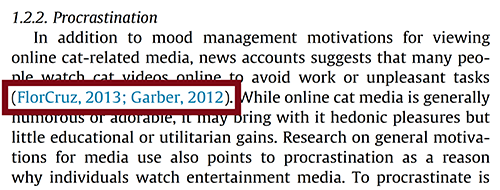Referencing
Using references
When you submit an assessment you will need to show the reader the ideas, research or words you have referred to in your work. This is called referencing and tells the reader about the kind of sources you have used.
Referencing involves bringing ideas, facts and arguments together from multiple sources to illustrate a point. this is important within Higher Education, as you will be making use of a wide range of material and acknowledging the work of others.
Accurate referencing can help strengthen arguments based on fact rather than opinion, and prevents plagiarism. Your lecturer and the HE study team can offer you support with referencing.
Workshops that cover referencing are held over the summer and the week prior to induction, then your personal tutor will deliver referencing sessions during week 4 of your tutorial. Referencing the work of others for the first time can be daunting, so make sure to ask for support at anytime.
Cite Them Right

At UCSD we use Cite Them Right as our guide for referencing. You can access Cite Them Right Online for free using South Devon College as your institution. You do not need to remember referencing rules, simply look up how to reference the source you have used e.g. book, journal, webpage. The referencing style you use at UCSD is Harvard, Cite Them Right.
(NB: Only use Cite Them Right. Cite This For Me is not accepted as a referencing guide at UCSD).
As an institution, UCSD requires all authors to be listed in the reference list. This means et al. can only be used within an in-text-citation.
Why reference
- Referencing gives authors due credit for their work.
- References enable the use of key ideas and research within your discipline and strengthens your arguments and recommendations.
- Referencing gives you the opportunity to show the breadth of your reading.
- Good referencing allows you and your readers to locate the sources you have used.
- Failure to reference accurately may result in plagiarism (presenting someone else’s ideas as your own).
Keep a record of everything you read
Doing this will make it easier and quicker when referencing your final piece of work. Details may include:
- Author or organisation
- Title of book or web page
- The webpage or URL address
- Page numbers where required
- The DOI from a journal article
How to reference
You will need to include both an ‘in-text citation’ within the text and more detailed information about the source in the ‘reference list’ at the end.
In-text citations
In Harvard referencing for example, the surname and date should be inserted within the text to show the author and when the source was written. This is known as an ‘in- text citation’ and is a useful way to show where your information came from.

Example: In-text citations (Harvard)
The increasing dominance of supermarkets in the United Kingdom (UK) has significantly contributed towards the decline of traditional grocery stores (Allen, 2009). Smaller, independent stores may find it difficult to compete with the buying power and aggressive tactics used by supermarkets to attract consumers. In Withernsea, for example, a new store offered local residents 40 percent off vouchers (Walton, 2014). Proudfoot, a long- established local business saw their custom and profits fall by almost 50 percent within a few months of a major grocery store opening (Competition and markets authority, 2011). Gibbs (2013) report suggests this tactic has been used by large supermarkets across the country and have had “…a similar impact on other local businesses”. These tactics have been called “aggressive and anti- competitive” (Singh, 2013) and it seems that even successful businesses may struggle to compete.
Reference list
The reference list should be in alphabetical order at the end of your work and include the full details of the reference, so that the reader can locate a source.
The reference list must match the in-text citation and needs to be written in the citation order for that type of source (see Cite Them Right Online).
The reference list only includes the sources you have used in your text. A bibliography, is different to a reference list, as it includes all the material you have read regardless of whether you have referred to it or not.
Example: Reference list
Allen, A.D. (2009) Store wars. London: McGraw.
Competition and Markets Authority (2011) CMA market investigations. Available at: www.gov.uk/competition/markets/cma (Accessed: 12 June 2020).
Gibbs, B. (2013) ‘The price of your shop: the fall of independents’, The Grocer. 53 (1), pp. 7-12.
Singh, K.A. (2013) Grocery giants: economics, accountability and market domination. Baltimore: Johns Hopkins Press.
Short video’s from Cite Them Right
To access videos, sign in using South Devon College as the institution, and then your student password.
What is the Cite Them Right referencing style? Cite Them Right – What is the Cite Them Right referencing style? (citethemrightonline.com)
How do I use Cite Them Right? Cite Them Right – How do I use Cite Them Right? (citethemrightonline.com)
The elements needed in a reference Cite Them Right – Elements of a reference (citethemrightonline.com)
Link to Cite Them Right video page to view all eighteen videos Cite Them Right – Video Details (citethemrightonline.com)
The following interactive resource on academic integrity will introduce you to the importance of referencing and how to do so.
Download a copy of the referencing guide
